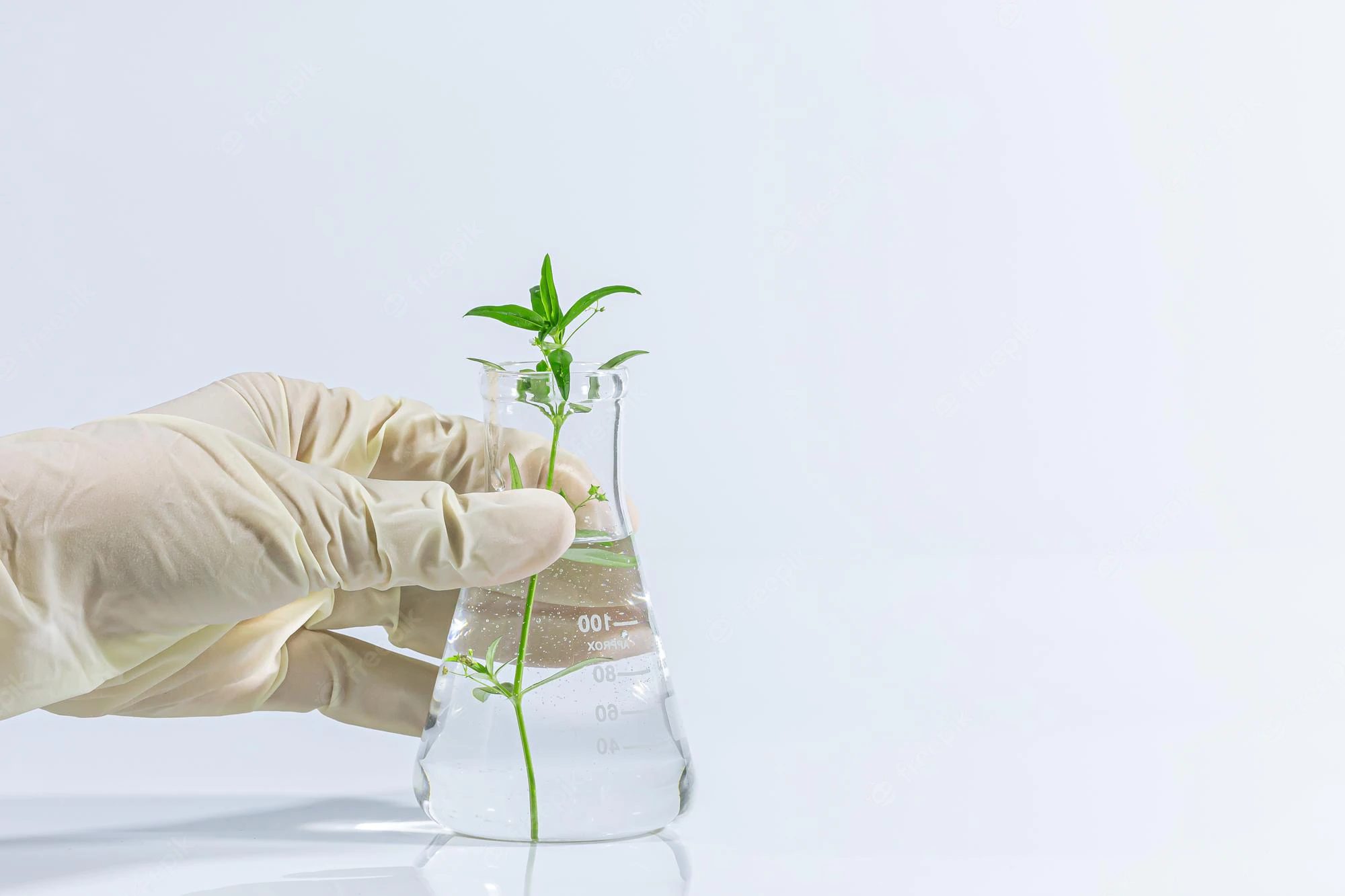In-vitro aquarium plants
In-vitro aquarium plants
Have you ever heard anything about in vitro plants? Some people claim that in the future, we will not be able to see the traditional plants anymore because they will be replaced by in vitro plants at some point. We do not know that but the fact is that in vitro plants are becoming more and more popular.
In this article, we are going to establish why they are such a brilliant alternative to aquarium plants, typically sold in baskets filled with mineral wool.
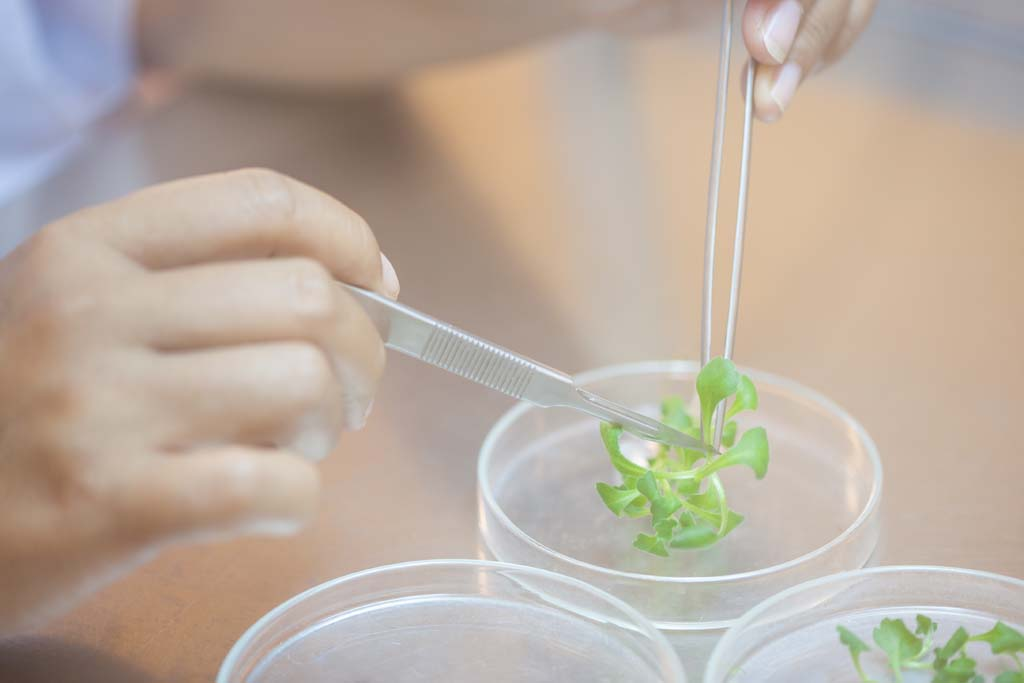
What are in vitro plants?
First of all, in vitro means literally 'in the glass. Initially, in vitro plants were grown in glass containers. It still happens on some beautiful plantation farms but not often. Nowadays, planters usually grow in vitro plants in disposable plastic packaging but the name has remained unchanged. This solution is efficient because distributors deliver those seedlings in these plastic cups and they will not break as glass ones did. Another advantage of this option is that plastic packaging is less expensive than glass. Plants packed in such a safe way can tolerate the transport, and even after receiving the parcel, you can store it for a long time, and nothing wrong will not happen.
In vitro method is a form of plant reproduction in precisely selected laboratory conditions. By doing that, we've got everything under control and it is a perfect way to get high-quality plants. The obtained in vitro plants are genetically exact copies of the parent plant. Growers select the healthiest and the most fruitful aquarium plants and acquire plant cells from them.
In theory, a complete, in vitro plant can come into being from every single cell. The thing that growers need to consider is that the plant fragment has to have sterile conditions. It means that it should be devoid of any bacteria, fungi and other harmful pathogens. Contemporary and efficacious laboratory techniques can achieve this.
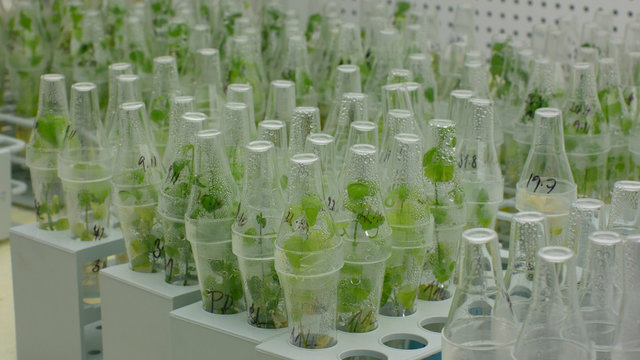
Tissue culture plants
Growers use this collection of techniques to maintain plant tissues or organs in a sterilized environment. Growers use it to get many clones of the same aquarium plant. Those techniques in tissue culture are known as micropropagation. It offers certain advantages over traditional methods of reproduction.
Unfortunately, we can't accomplish this effect in a planted aquarium or any other plantation—this is the exact reason why the special gel has been created. The nutritional gel or nutrient medium consists of macro- and microelements and other substances that mimic the natural environment of a particular plant. It is crucial for plant growth, especially for young ones. The recipe for the nutrient gel varies in composition because each plant species needs different elements or at least in different concentrations. It can be pretty laborious work, but the results are worth it. After a few weeks, we may receive up to dozens of plants ready to plant in the aquarium.
Without the nutrient gel, most aquatic plants would die. The gel for aquarium plants is a temporary substitute for fertilizers, CO2 injection, and the lack of proper aquarium lighting.
Once you open the plastic cup and the outside air gets inside, along with bacteria and fungi, these microorganisms will start to consume the nutrients from the nutrient medium for their growth. It can slow down plant growth. It happens because plant cells divide much more slowly than bacteria or other pathogens.
Attention: you have to remove a special gel that covers the root system before placing in vitro plants in the planted aquarium.
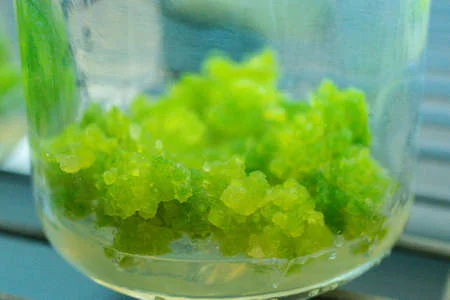
Advantages of in vitro plants
The list of profits that sellers, buyers and the environment receive is extensive:
Easy to store
Firstly, in vitro plants are almost self-sufficient. Following simple rules can store them for a few weeks without losing quality. They reduce the involvement of the seller to the absolute minimum.
To begin with, aquarium plants in the gel do not need to be watered; more importantly, you don't have to remove algae because there is no possibility of such a presence.
The thing that you should be concerned about is temperature. If you can keep them in a cooler place, that would extend their lifespan. It works just like with humans. While being exposed to lower temperatures, our vital functions slow down. Aquatic plants carry out life functions such as respiration or excretion of used compounds into the gel substrate. It will adjust its colour to the concentration of those substances. While being highly polluted, it becomes brownish.
Nevertheless, the lower temperature reduces the plant's metabolism. The optimal temperature is from 64°F to 68°F.
Last but not least, you should provide them with adequate lighting. Ordinary fluorescent lamps or LEDs will also fulfil the task.
Traditionally, storing plant species in baskets is more costly and time-consuming. This solution requires significant expenditure on electricity- lighting, aquarium filtration, heater, CO2 regulator. Not to mention that you have to clean the display tanks to attract customers.

Access to light
In addition to the care, the traditional way to store aquarium plants forces the shop owner to arrange them densely, which means that the access to light to the lower parts of the plants can be limited. Because of that, aquatic plants lose their leaves and change their colour to yellowish and brown. As a result, they become unappealing to the customers and are hard to sell.
In the case of in vitro plants, there are no similar problems. The buyer may see and evaluate the quality of a specimen, allowing them to choose the best on offer thanks to the transparent packaging.
Packaging and labels
The visibility of labels is also an essential thing when talking about aquatic plants. Both the plants in baskets and in vitro plants have labels. However, the customer usually cannot know the information about the plant's requirements from the basket ones without asking the seller. Shops usually display in vitro plants on shelves, and the labels on the packaging are clear and comprehensive. It significantly influences the decision-making process.
Lack of intruders
The most important thing about in vitro plants is the lack of undesirable organisms such as algae spores, disease-causing pathogens or snails.
These last can be pretty challenging to remove once you introduce them to your tank. They will reproduce rapidly and easily overtake your freshwater aquarium. What's worse, they can be invisibly attached to leaves, stems or decorations. In the case of aquarium plants cultivated in vitro, that problem does not exist.
Preparation process
Another asset is quicker preparation of tissue culture plants in the aquarium. At first sight, it looks like there is nothing complicated in both cases, but if we delve into details, we will find out that getting rid of the mineral wool is much more complicated. Before we plant our species, we have to remove the wool entirely, and by doing that, we accidentally damage the roots. It can be harmful, especially for aquarium plants that are sensitive to this operation, e.g. Cryptocoryne.
It's easier to rinse the gel from plants grown in vitro than the basket ones.
Storage time
If you decide to purchase plant species in baskets, you must instantly plant them in the tank or store them in any other tank before their final destination. This can be troublesome because you receive the plant, and you have to have a place for it immediately. Additionally, frequent environmental changes can negatively affect the overall condition of a particular plant species.
On the other hand, you can store the purchased cup with tissue culture plants on a desk under a lamp for several days, and nothing will happen. This time is enough to plan everything carefully. You can plant your species step by step, just like you want, without time pressure.
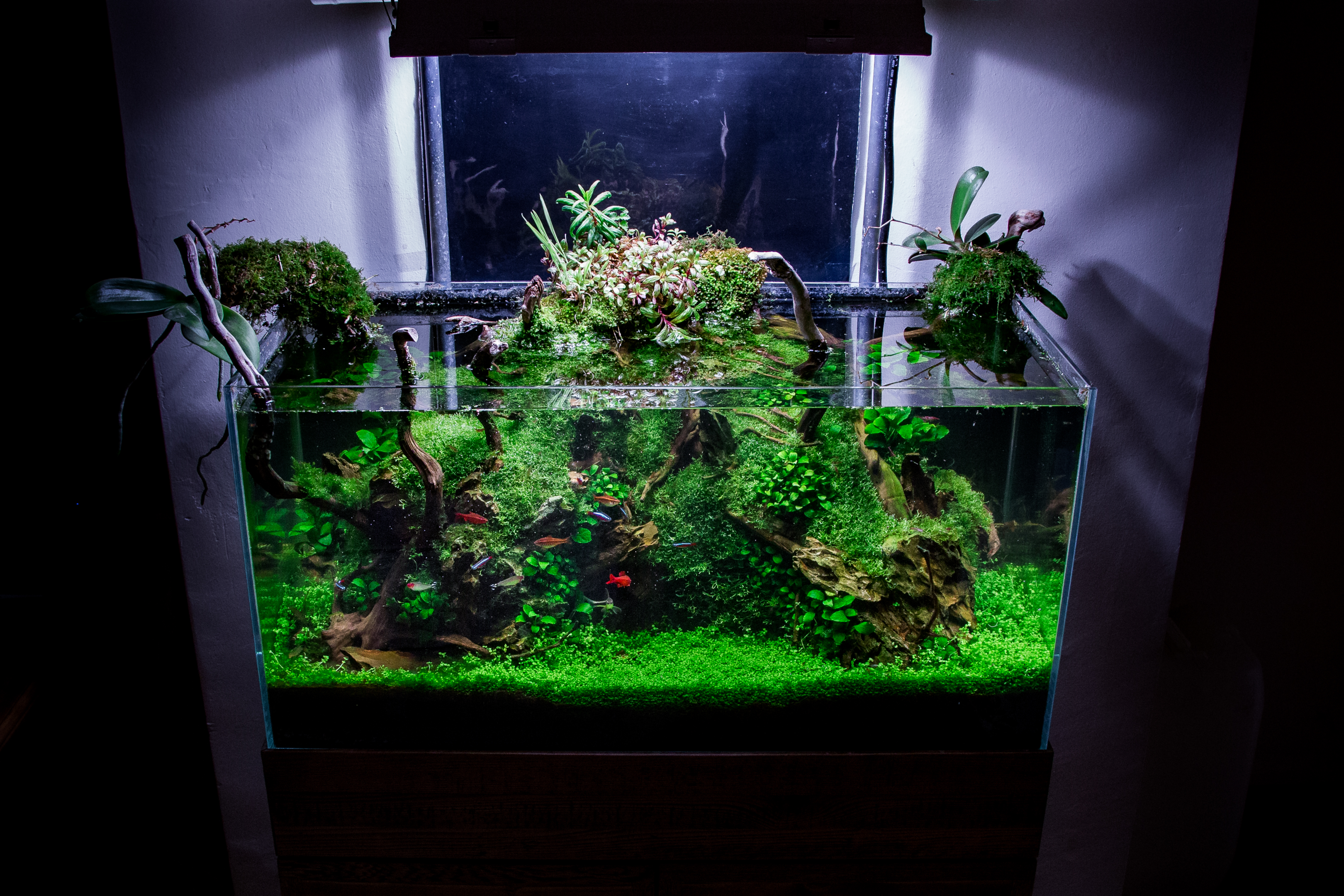
Environment-friendly
While traditional greenhouse cultivation occupies vast areas and uses many water resources, in vitro aquatic plants are less demanding. In the case of space savings, in vitro plants are grown on multi-level racks. All the elements, including water, we administer directly to the plants. Because of the sterility in the production process, only plants absorb them. It's not possible in traditional planting because of the presence of pathogens which cause a rise in water and nutrient consumption.
Moreover, spraying is not needed in laboratories, which is essential for growing plants in baskets. You must rinse the greenhouse crops under running water before placing them in a fish tank. Many sensitive organisms may suffer because of this type of chemistry.
Summary
The production of in vitro plants has emerged as a rising industry worldwide, and not without reason. As you can see, tissue culture plants have many benefits for both buyers and sellers. Not only are these plants diseases free, but they produce strong roots compared to those produced by conventional methods. They also do not lose their quality and appearance as fast as the conventional ones. Low storage costs, long shelf life and minimal care for store staff increase sales.
Aquarium hobbyists will also benefit from having tissue-culture aquatic plants. Such plants are relatively easy to plant, catch on quickly, and you can observe vigorous growth.
